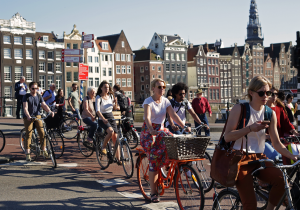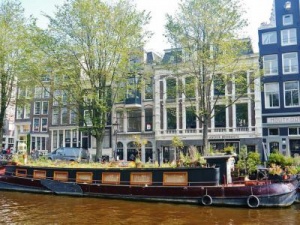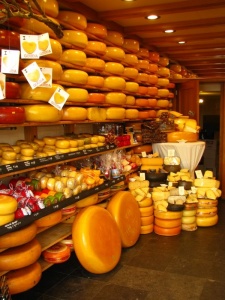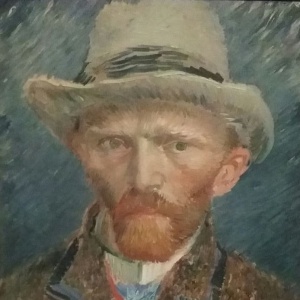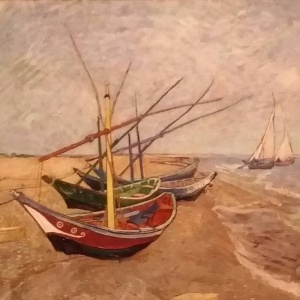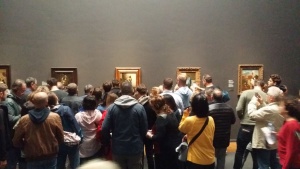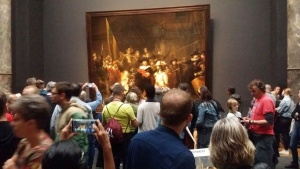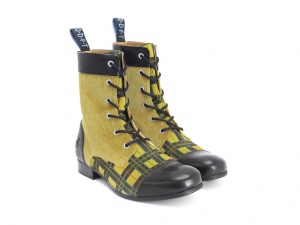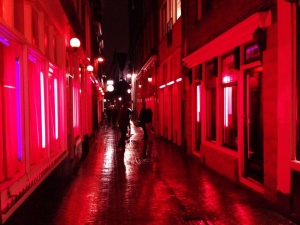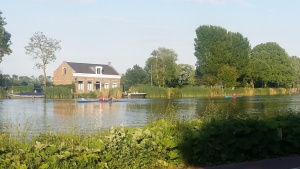In Amsterdam, asking “where are the dykes?” is as fraught with danger as asking a black waitress in Mobile Alabama for a cup of white coffee. And I’ve done both. In my defence the racist gaffe was in 1976, aged 26, travelling across America on a 15-day Greyhound bus pass. Certainly not as evolved as I would like to think I am now. But that is also under revision since the Dutch woman I asked was less than impressed and peddled off down the bike lane that I had just deliberately stepped into to speak with her. That she was brutishly stout, steel grey hair styled in a pudding cut, more Hattie Jacques from the Carry On movies than Inge de Bruijn Netherlands Olympic swimming champion, was not intentionally stereotyping, racially profiling, or sexist. She was just the only one going slow enough for me to stop. The Zuiderzee is the answer to dykes, and as a courtesy all American waitresses ask if you would like cream in your coffee.
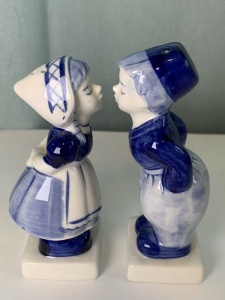 My affinity for Holland began early. All of nine years old, Judy Dixon and me singing “I’m A Little Dutch Girl/Boy”, complete with clog dance, at our State School’s show-and-tell concert. Some things don’t travel well over time. Song lyrics for instance. Within six verses as husband-and-wife Lena and Yarkov, wretchedly poor fishers, we bemoaned our beggarly circumstances. Lena sewed and patched Yarkov’s breeches until she had nothing left to sew. On show for all to see while dressed in our Mums version of threadbare Dutch costumes. From memory we didn’t come close to looking like the Delft ceramic girl and boy pepper and saltshakers. It was inevitable I would one day want to visit the country that gave me such a start in life.
My affinity for Holland began early. All of nine years old, Judy Dixon and me singing “I’m A Little Dutch Girl/Boy”, complete with clog dance, at our State School’s show-and-tell concert. Some things don’t travel well over time. Song lyrics for instance. Within six verses as husband-and-wife Lena and Yarkov, wretchedly poor fishers, we bemoaned our beggarly circumstances. Lena sewed and patched Yarkov’s breeches until she had nothing left to sew. On show for all to see while dressed in our Mums version of threadbare Dutch costumes. From memory we didn’t come close to looking like the Delft ceramic girl and boy pepper and saltshakers. It was inevitable I would one day want to visit the country that gave me such a start in life.
Mid planning stage attempting to accommodate myself for a week it became abundantly clear neither quaint rooftop, loft, attic, or houseboat would be “my thing.” This is the domain of storks, mice, and Anne Frank. Crawl spaces made accessible via narrow wooden stairs rebranded boutique, authentic, chic, original with a price tag to match. I cast my net wider. I’m a quick and savvy traveller. Staying in Amsterdam Zuid (South) puts me outside the five rings of canal systems that are the charm, mood, and mystique of inner urban living where residents chafe with tourists who clog (not the shoe, not the dance) the limited space available. Anything to savour raw Bohemia.
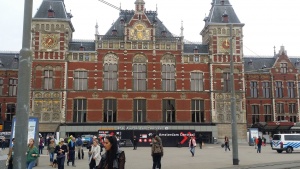 All roads lead to Rome but in Amsterdam, all trains, ferries, and trams lead to Central Station. From this point you fan out dispersing yourselves down narrow laneways to ogle canal front houses. If you’ve divested €6,50 buying the 90-minute Bus Tram Metro ticket you clearly have a plan and not wasting a minute quickly redeploy. To get a sense of what makes the city tick, and how best use can be made of covering ground on limited time, I took to the water. For one hour and €12 I boarded an Amsterdam Canal Exploration tourist boat, a sleek lean hulled craft carrying boisterous unrestrained children with uncaring parents who smoked. Gliding the waterways, slipping past anchored riverboats abundant with greenery, and alive with human activity going about everyday chores cooking cleaning hanging the wash, these are permanent homes to thousands. Multi storied doll-house dwellings packed side-by-side grow out of canals or burst through stone pavements. Recent severe weather has uprooted and tumbled age-old trees into the canal. A stark reminder of the delicate balance when living in close harmony with the environment. Viewing from the canals has the advantage of perspective not seen at ground level. Intimacy develops with the city.
All roads lead to Rome but in Amsterdam, all trains, ferries, and trams lead to Central Station. From this point you fan out dispersing yourselves down narrow laneways to ogle canal front houses. If you’ve divested €6,50 buying the 90-minute Bus Tram Metro ticket you clearly have a plan and not wasting a minute quickly redeploy. To get a sense of what makes the city tick, and how best use can be made of covering ground on limited time, I took to the water. For one hour and €12 I boarded an Amsterdam Canal Exploration tourist boat, a sleek lean hulled craft carrying boisterous unrestrained children with uncaring parents who smoked. Gliding the waterways, slipping past anchored riverboats abundant with greenery, and alive with human activity going about everyday chores cooking cleaning hanging the wash, these are permanent homes to thousands. Multi storied doll-house dwellings packed side-by-side grow out of canals or burst through stone pavements. Recent severe weather has uprooted and tumbled age-old trees into the canal. A stark reminder of the delicate balance when living in close harmony with the environment. Viewing from the canals has the advantage of perspective not seen at ground level. Intimacy develops with the city.
Here I am. Early summer and the tulips are as good as gone; windmills are scarce on the ground. Vincent van Gogh Museum booked out, but I discovered cheese wheels and tasting boards. Found the Red-Light district but couldn’t find Anne Frank’s huis. Smell of dope from cafes gives me the munchies and a headache, the World Press Photo exhibition gives me hope and lifts my spirits. Vincent van Gogh Museum still booked out, caught a bus to Haarlem and visited Frans Hals huis. Tulip bulbs readily available for purchase, customs prohibit entry to Australia. Still can’t get into Vincent van Gogh Museum, but The Milkmaid and The Night Watch are on display at Rijksmuseum. Clogs, clogs, everywhere clogs, then happened upon Fluevog where fashion footwear and art collide. Inadvertently ambled past Rembrandt’s huis, later I walked to a bend in the Amstel River and saw the houses Rembrandt sketched. The niggling cough I arrived with has deepened, with 7 weeks travel to go considering pulling the plug and going home.
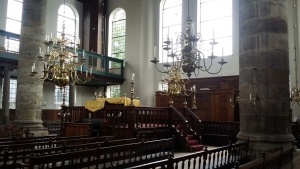 The Jewish Quarter, five locations one ticket. Began at the Jewish Historical Museum, the Children’s Museum, across the road to the Portuguese Synagogue. A slow reflective walk along Plantage Middenlaan housing the National Holocaust Museum before finishing at the National Holocaust Memorial. That the Quarter exists is testament to the strength, endurance, and courage of Jews. Unnerving to witness acts of calculated, systematised genocide. The holocaust is not driven by religious persecution; the hatred engendered to perpetrate action is not inherent. Hate is learned. The root of this evil is political. Evil is marching again gaining global traction.
The Jewish Quarter, five locations one ticket. Began at the Jewish Historical Museum, the Children’s Museum, across the road to the Portuguese Synagogue. A slow reflective walk along Plantage Middenlaan housing the National Holocaust Museum before finishing at the National Holocaust Memorial. That the Quarter exists is testament to the strength, endurance, and courage of Jews. Unnerving to witness acts of calculated, systematised genocide. The holocaust is not driven by religious persecution; the hatred engendered to perpetrate action is not inherent. Hate is learned. The root of this evil is political. Evil is marching again gaining global traction.
The changing ironies of life walked me back, retracing my earlier path to The Hortus, one of the oldest botanic gardens in the world, originally a medical herb garden. A small irregular shaped 1.2 hectares conserved to generate well-being. A place where doctors and pharmacists practiced herbal medicine, where citizens sought curatives. Pause, breathe, reality check; feeling ashamed to think after all I’d just learned I considered fleeing home because of a mild flu.
One day left in Amsterdam before boarding FlixBus and seven hours to Berlin. On a whim I returned to lodgings via the Van Gogh Museum. Persistence rewarded, 11:00am tomorrow.
